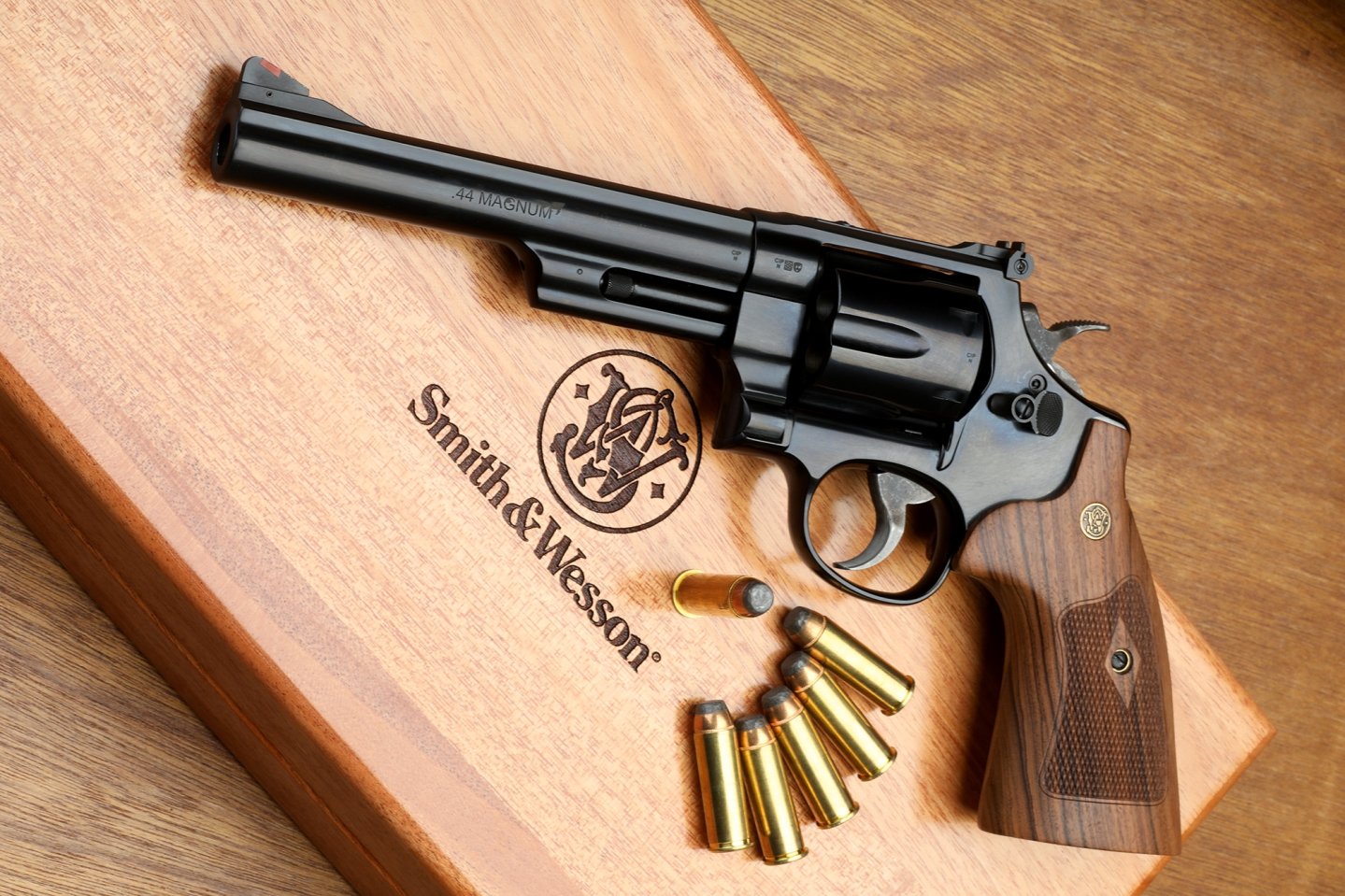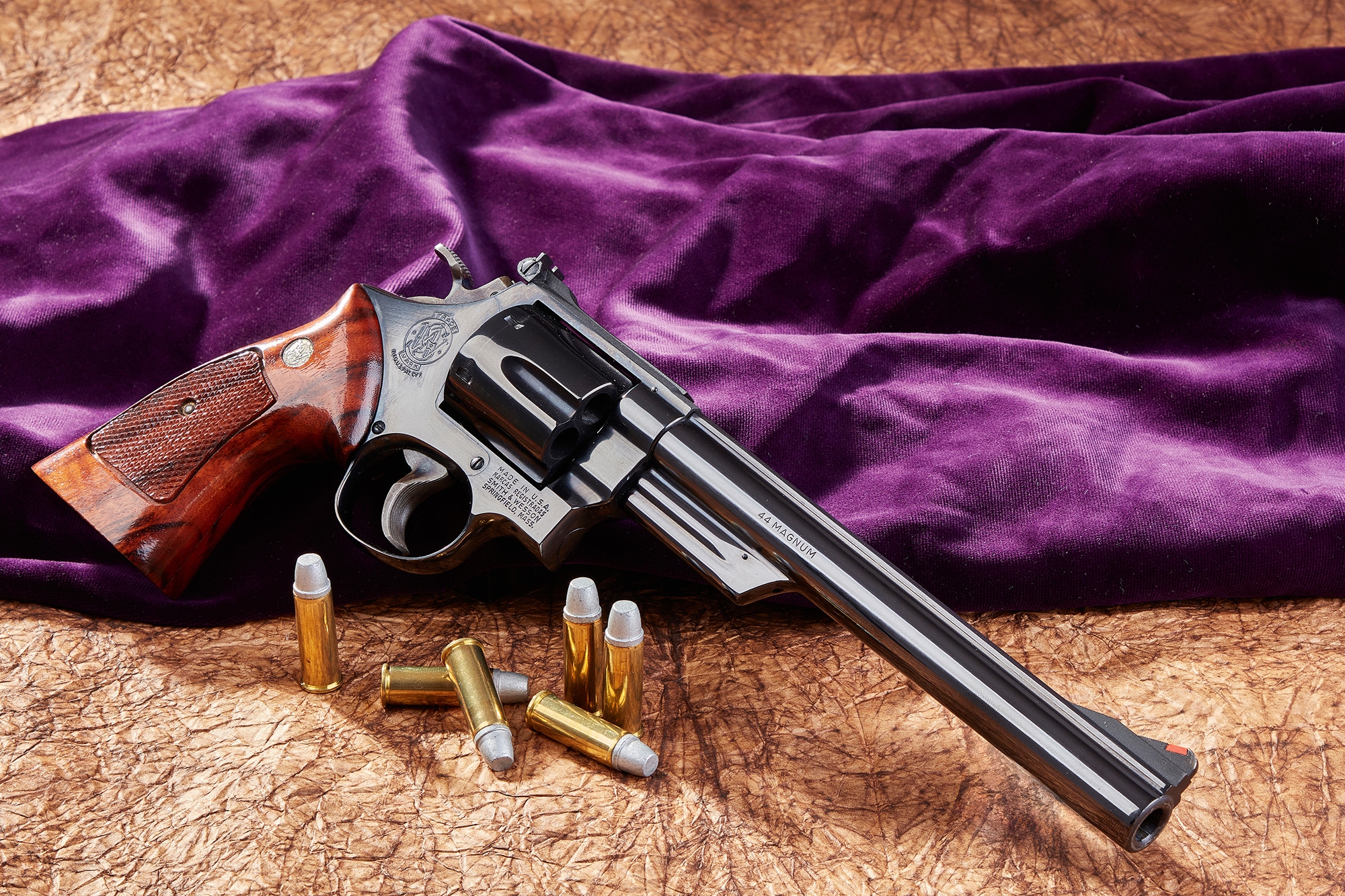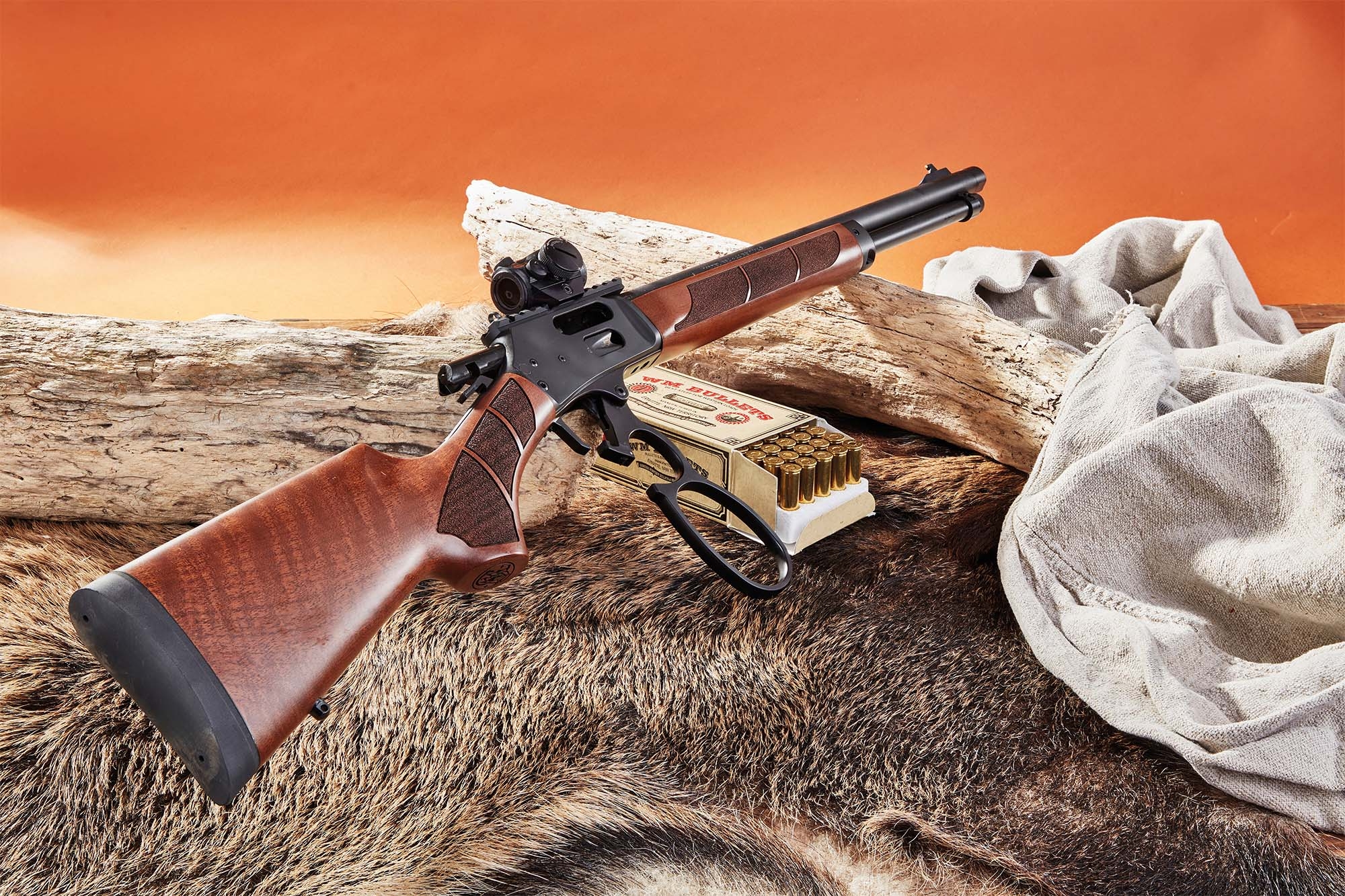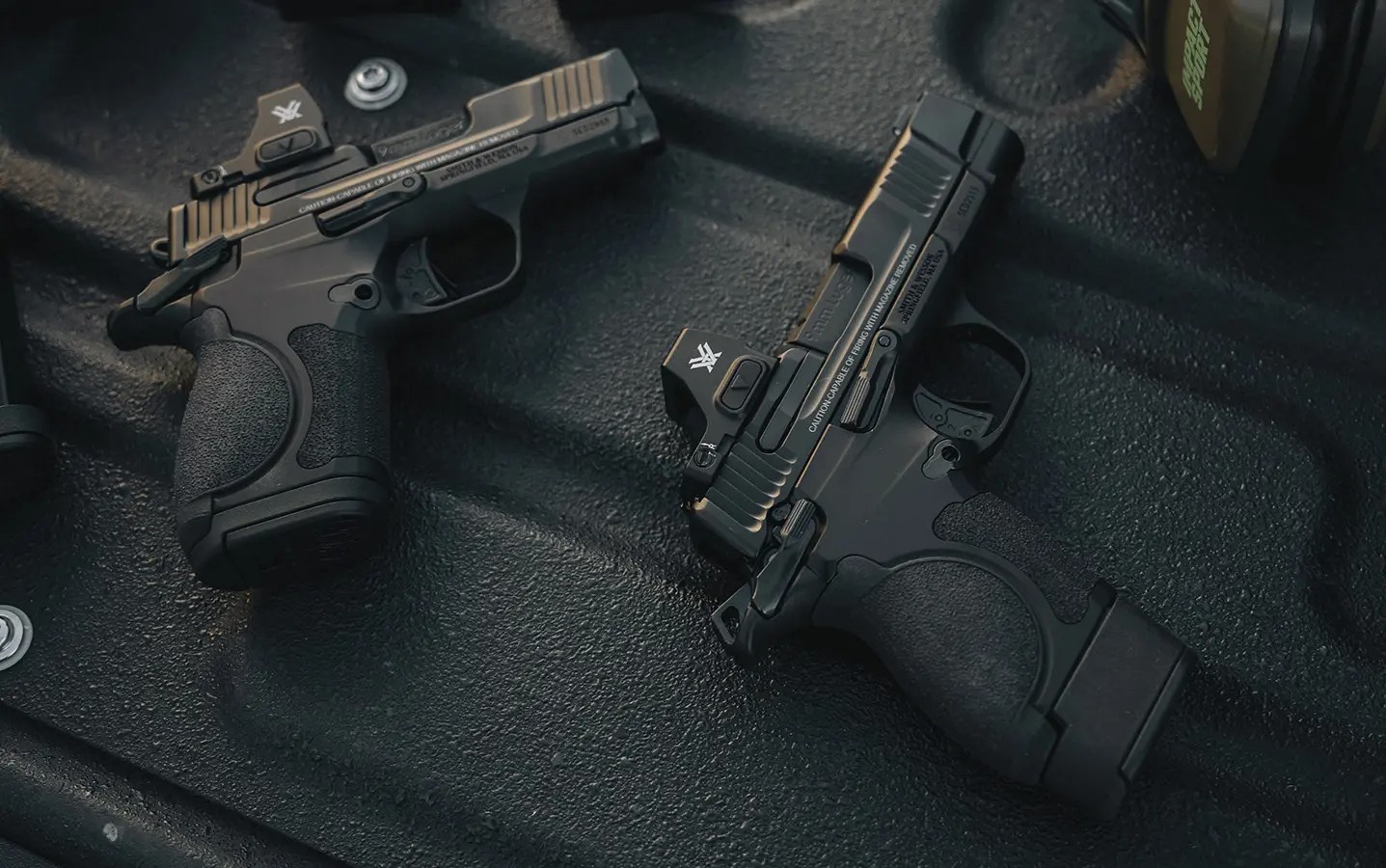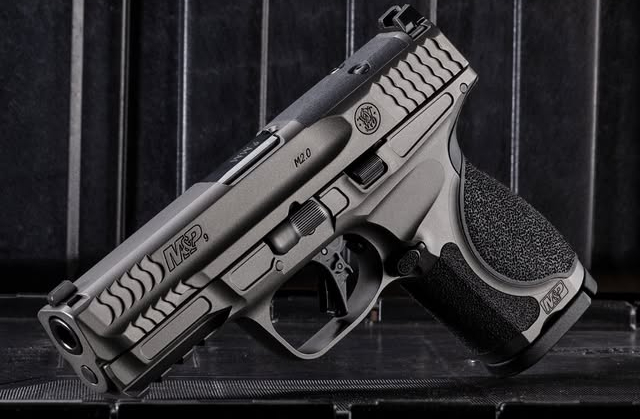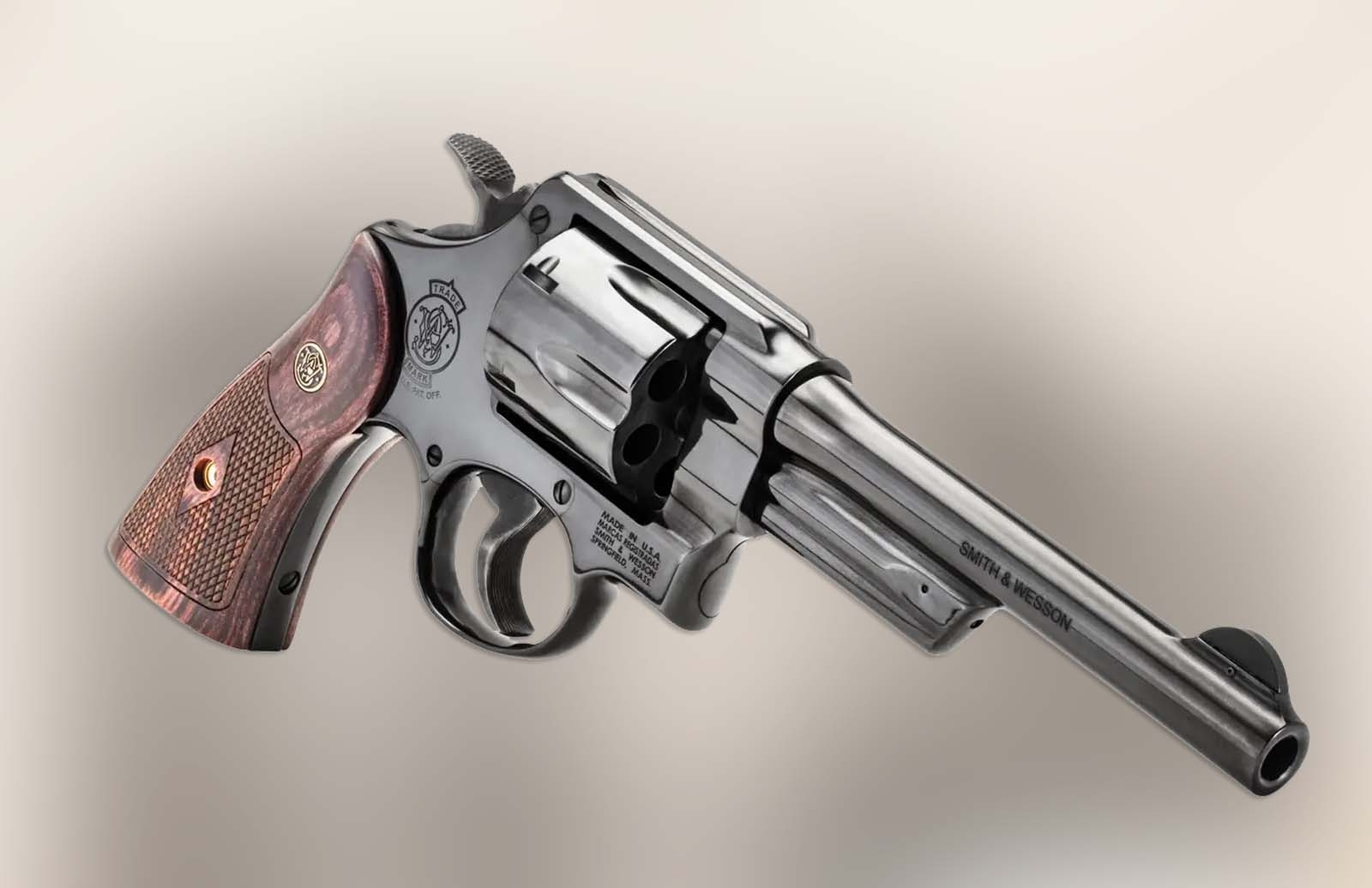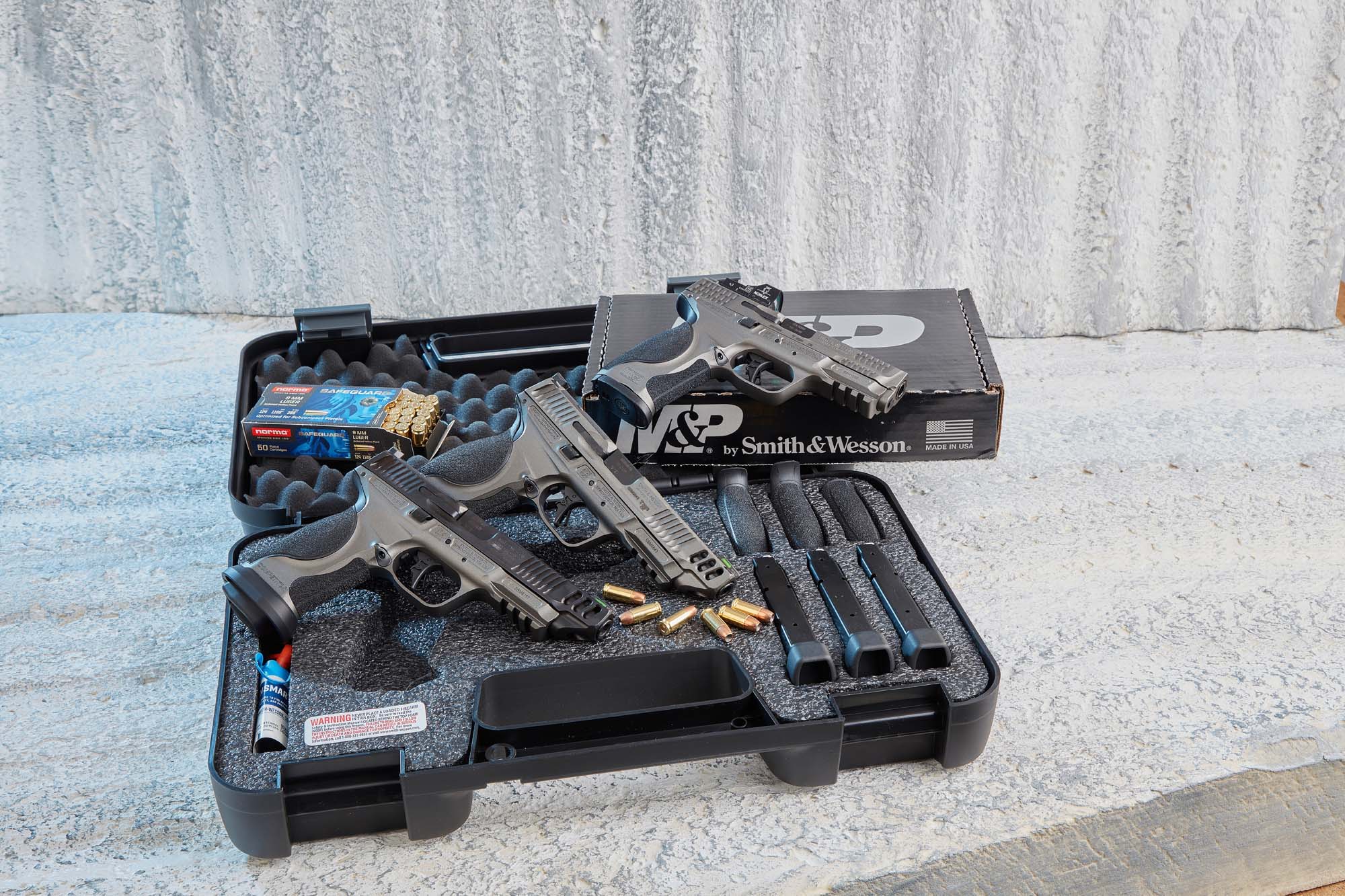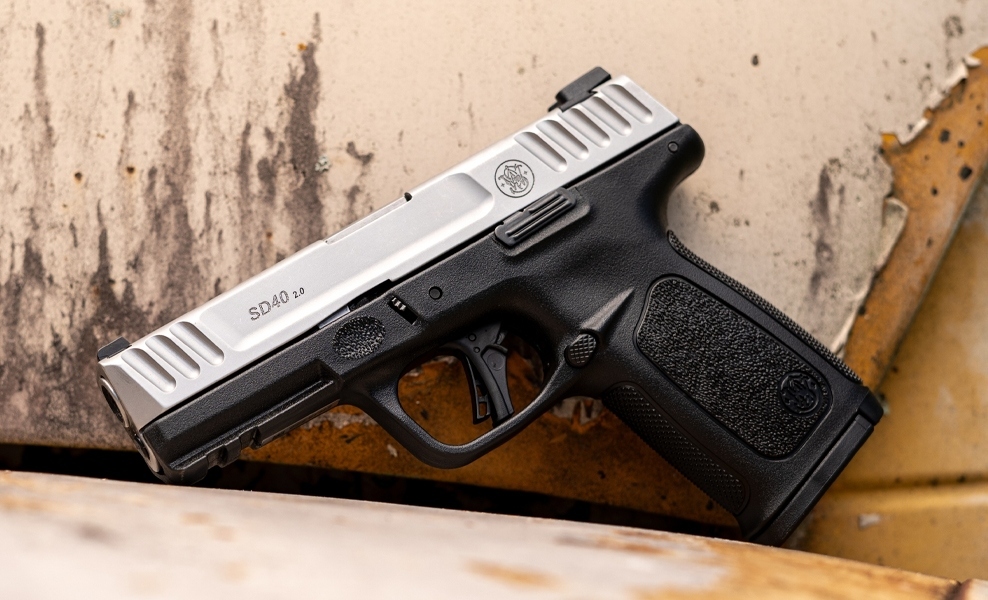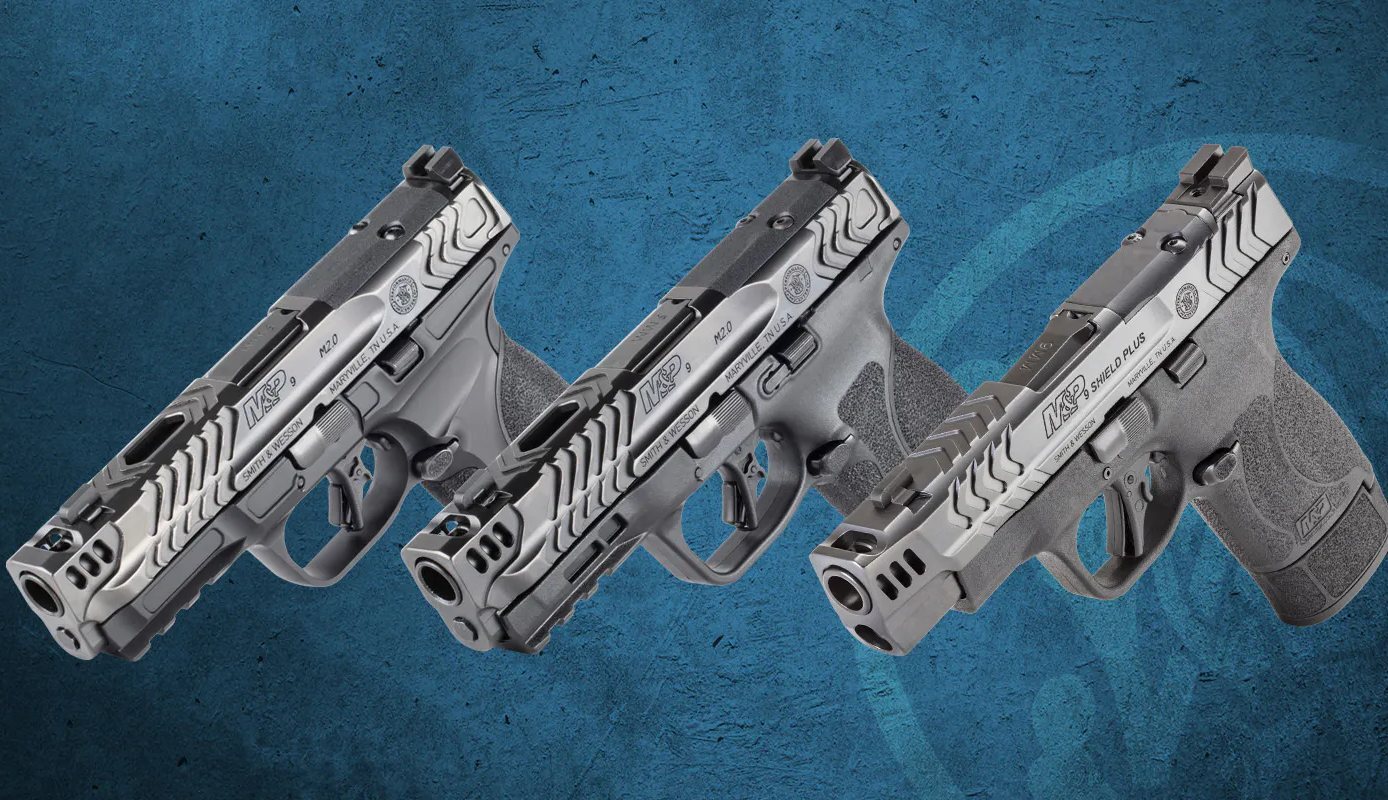It's all a matter of taste, of course, but in the face of all the newfangled sporting revolvers with bulky barrel weights, Picatinny mounting rails or adjustable sights, an old-timer like Smith & Wesson's M29 with its elegant silhouette is a treat for the eye. After all, guns don't have to serve a sporting purpose exclusively, but should also simply be fun and evoke emotions. And it is precisely in this respect that the M29 made of deep blue finished carbon steel, which is available again as a new edition in S&W's Classic Series, definitely has enough to offer. Speaking of celebrities like Clint Eastwood & Co, did you know that Frank Sinatra also owned a Smith & Wesson 29-2? The engraved model was auctioned off in 2013 for $19,950.
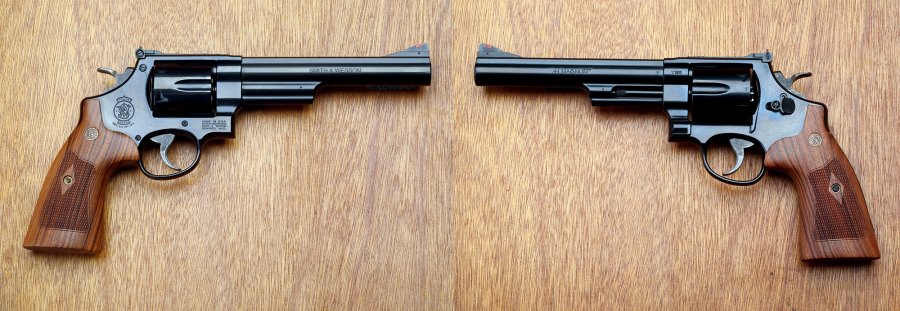
Those who are declared dead live longer: our story about the classic six-shooter from Massachusetts begins where it actually ended, in 1999, when Smith & Wesson decided to let the Model 29 in its original design fall victim to the red pencil. At that time, blued guns were no longer so popular, and the easier-to-clean stainless steel models in the form of the Model 629 were more successful on the market. Nevertheless, the 29 with the large N-frame and half-length underlug was and is not dead and saw the light of day again and again as a limited special model. In our opinion, the Classic Series presented here with a 6.5" (165 mm) barrel is particularly well proportioned and the barrel length fits the power .44 Magnum cartridge better than that of the M29 Classic Series with a 4" (102 mm) long barrel. Swinging the cylinder you can find the 29-10 designation on the frame of our test model, indicating the now tenth generation of the oldie from Springfield. Without a doubt, new and old have been combined here. The square butt has been brought back and the side plate for covering the mechanism is secured with four screws, just like in the early days. The mechanism parts are the result of modern, efficient MIM (Metal Injection Molding) manufacturing and the firing pin on the hammer face is also missing.
As with modern designs, the firing pin is now frame-mounted and spring-loaded. Our cylinder had some longitudinal play on the axis, so the cylinder gap was 0.25 mm. The traditional adjustable rear sight and ramped front sight with red inlay are part of the classic appearance of the evergreen N-frame revolver. Obviously, the question always arises as to what you expect from a classic Smith & Wesson M29. If you're looking for a recessed cylinder or a pinned barrel, you'll have to go further back in history and look around the used gun market. But first you have to find what you're looking for, and well-preserved pieces can sell for four-figure sums.
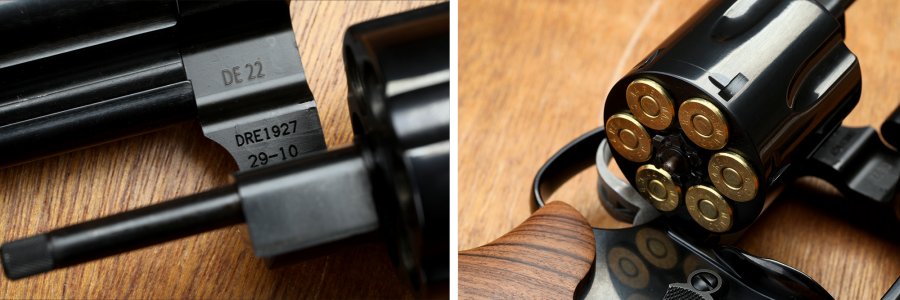
Technical changes of the Smith & Wesson M29 series
Nothing is as constant as change, once said the Greek philosopher Heraclitus. Therefore, we don't want to miss the opportunity to once again chronologically list the most important changes in the 68-year history of the Smith & Wesson M29:
December 1955: the first production gun bears the serial number S130927 and also the model designation NT-430.
From 1957, the model is officially called 29, followed by barrel lengths of 4"/102 mm, 5"/127 mm and 5.5"/140 mm, the latter two being very rare and highly sought after by collectors today.
1958: the introduction of the 8⅜"/212 mm barrels begins.
1962: The model designation 29-1 introduces a modified ejector rod, which now carries a left-hand thread. In the same year, the second generation 29-2 is also launched with a modified cylinder stop.
1979: The 6.5"/165 mm barrels are dropped in favor of the 6"/152 mm models.
1982: Pinned barrels are now a thing of the past. Barrel length is shortened from 44.2 to 43.0 mm. The Silhouette revolver with an extra-long 10⅝"/270-mm barrel expands the range.
1988: With the introduction of the Model 29-4, the screw that retains the cylinder crane changes, and studs within the frame are also modified.
1991: The long silhouette model is deleted from the catalog.
1993: The 29-6 model with rubber Hogue Monogrips is added to the catalog.
1995/1996: The square butt version is discontinued in favor of the round butt version. Some small parts are now manufactured using the cost-effective MIM process.
1997: The trigger is now also manufactured using the MIM process.
1998: With the Model 29-7, the hammer, which is also MIM manufactured, loses its firing pin, which is now frame-mounted.
1999: Officially, the Model 29 is removed from the product catalog. However, special models continue to follow, such as the Heritage Series in the early 2000s.
The Model 29 was available in countless special versions, the listing of which would go beyond the scope of this article. If you are interested in the history of the Smith & Wesson M29 and all other models of the traditional company, the reference book Standard Catalog of Smith & Wesson by Jim Supica and Richard Nahes is highly recommended.
On the shooting range with the Smith & Wesson M29 Classic Series with 6½-inch barrel
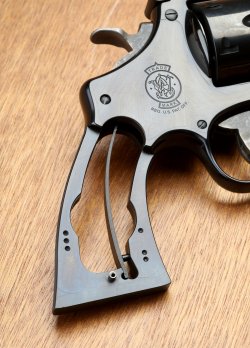
The current Smith & Wesson M29 again comes with a square butt.The Smith & Wesson M29 Classic Series with 6.5" barrel went into the Ransom Rest shooting machine to be accuracy-tested with ten loads in .44 Magnum, including three handloads, with a wide bullet weight range of 180 to 300 grains. The best group, at 57 mm, was achieved by the Magtech 240-grain JSP. Hardly worse was the CCI Blazer with 240-grain JSP bullet and aluminum case, which made it to 58 mm. Third place (60 mm) went to our handload with the 300-grain Ares bullet and the new Reload Swiss RS14 propellant, a powder specifically designed for reduced loads for high-capacity rifle or revolver cartridges.
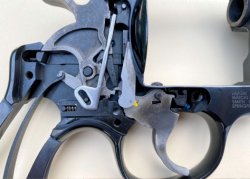
It can thus be classified similarly to the IMR Trail Boss, which is no longer available, or Vihtavuori's N32C, which is still available. With this type of powder, a lot of volume can be filled with little propellant due to its low bulk density, which favors the burning behavior. However, with the 180-grain and 240-grain bullets respectively, our loads – which were already at maximum powder charge – were too slow for the 1:20" (508 mm) barrel twist. The average value of all loads was just 84 mm. Whether you want to use the classic gun from the now 171-year-old manufacturer for sporting purposes at all is something everyone has to decide for themselves. For example, a 629 with a muzzle-length ejector rod housing (full underlug) and thus more front weight would have a smoother shooting behavior. Be that as it may, in terms of aesthetics and cult factor, the blued carbon steel classic still has the edge in our opinion.
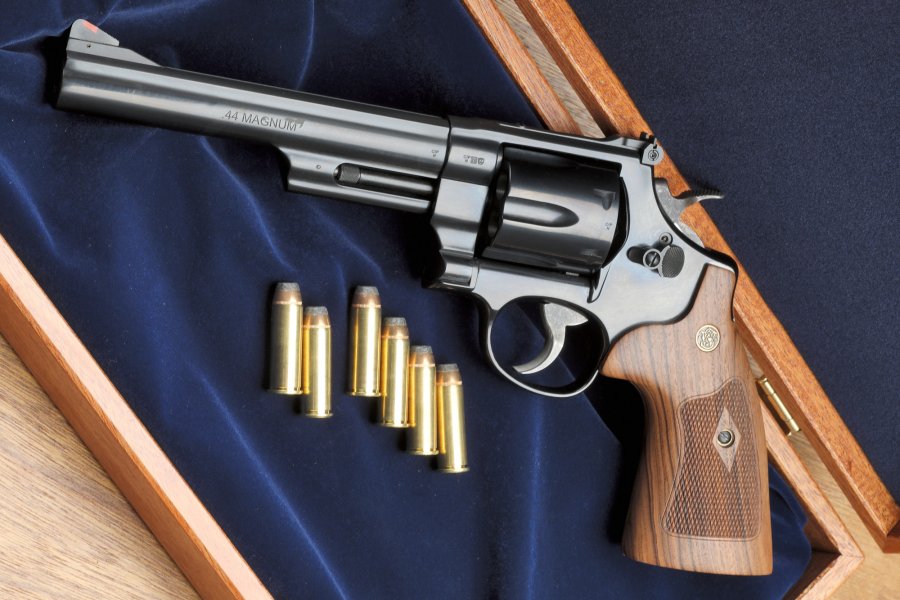
S&W M29 Classic Series specs and price.
Manufacturer: | Smith & Wesson |
Model: | M29 Classic Series |
Caliber: | .44 Magnum |
Cylinder Capacity: | 6 rounds |
Barrel Length/Profile: | 6.5"(165 mm) / 5 grooves, 1:20" twist |
Sight Radius: | 220 mm |
Rear Sight: | 3.15 mm notch, adjustable |
Front sight: | 3.1 mm (ramped front sight with red inlay) |
Cylinder Gap: | 0.25 mm |
Trigger Pull Weight: | 1,870 g (SA), 5,500 g (DA) |
Dimensions (LxWxH): | 305x43x155 mm |
Weight: | 1,358 g |
Price (MSRP in the U.S.): | $1,359 |
Our conclusion on the S&W M29 Classic Series in .44 Magnum
It's nice that in these days of high-tech match revolvers with state-of-the-art barrel designs and PVD coatings, there is once again a blued old-school classic. Our perfect test gun with 6.5"/165-mm barrel costs $1,359 (MSRP in the U.S., including blue plastic box and the wooden presentation case shown in the article). The 4"/102 mm version is available from $1,159 (but also comes only with the typical S&W blue plastic case).


